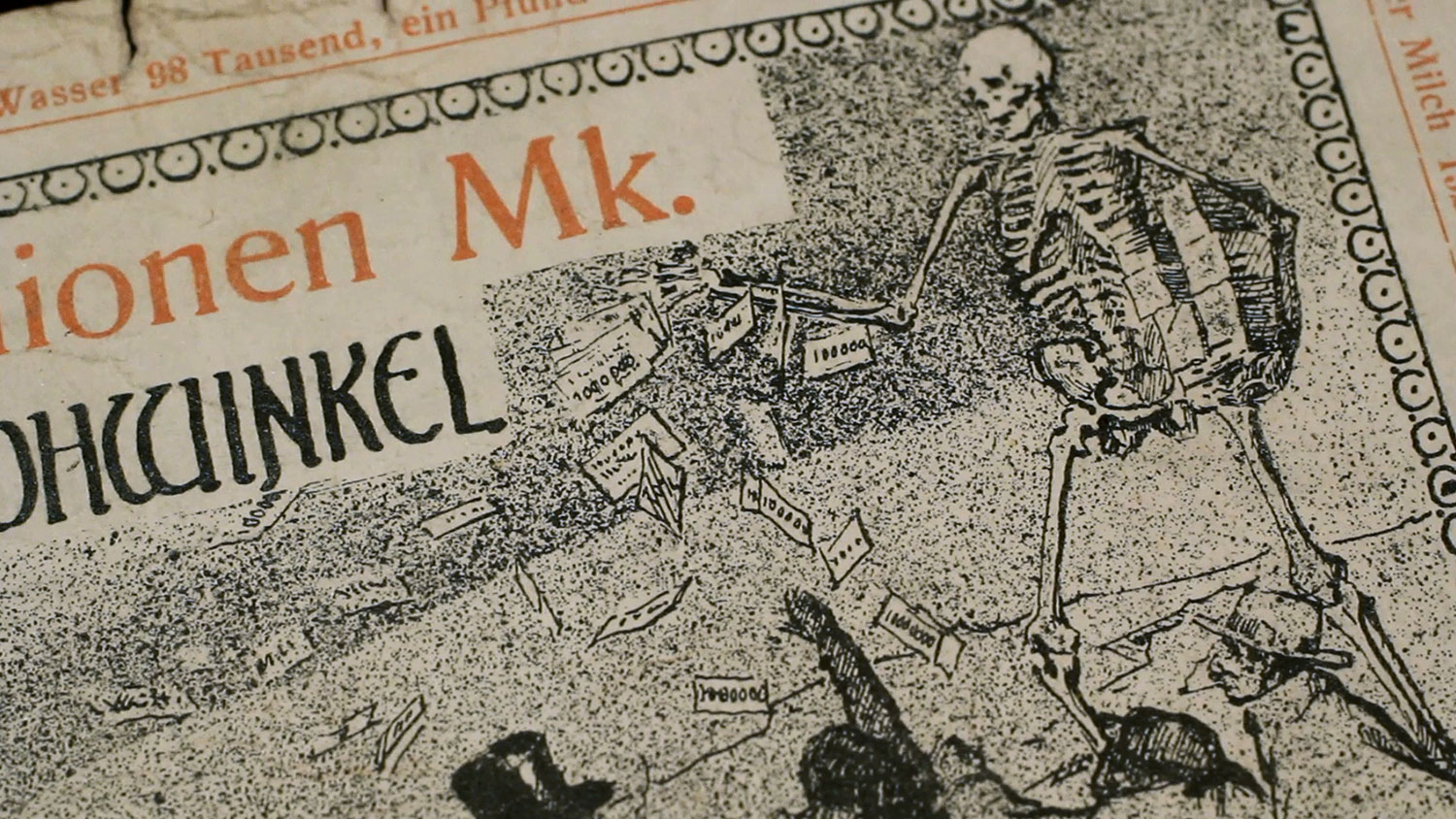The Offspring Resembles the Parent
13:44 min, color, sound, 2015
With Oscar Mangione.
The work The Offspring Resembles the Parent (2015) was created for the 2015 Venice Biennale. The title is based on Aristotle’s Politics, in which he argues that for money to increase at interest is the most unnatural mode of getting wealthy, since, unlike livestock and crops, money cannot breed as it “exists not by nature but by law”. Both works relate to the observation that memory is inextricably connected with economy – in the sense of capital that we manage or hand down. Etymologically, the word stems from the Greek goddess Mnemosyne, protector of memory, language, and recollection (and thus also the guiding light of Warburg). In the Latin translation, we have monere (to remind), which later became the root for both money and muntze, the stem for the Swedish word mynt (coin). The starting point of the film is the emergency money printed in the 1920s, banknotes used during times of crisis and inflation, or for enclaves without a set structure or definite borders, such as ghettos, concentration camps, or colonies. The meticulously designed notes are often visually dramatic, with propagandist messages in word and image. Engaging the veritably cinematic qualities of the delicately colored colonial notes, Selander and Mangione conjure up a bygone era, one in which a project disastrously helped lay the foundations for our own welfare society. “Colonialism as a vehicle for modernism”, as Hamid Dabashi puts it. The work, which is still in progress at the time of writing, ends the exhibition in a contemplation on fictive economies, dormant power, blind subordination, and a hyperinflation of values – human and monetary.
Text: Lena Essling
Credits:
Script: Lina Selander and Oscar Mangione
Camera: Lina Selander
Camera assistant: Cecilia Nygren
Editing: Lina Selander and Oscar Mangione
Voice over: Anna Sóley Tryggvadóttir
With support from Moderna Museet, Stockholm and Microhistories, Konstfack and The Swedish Research Council.







